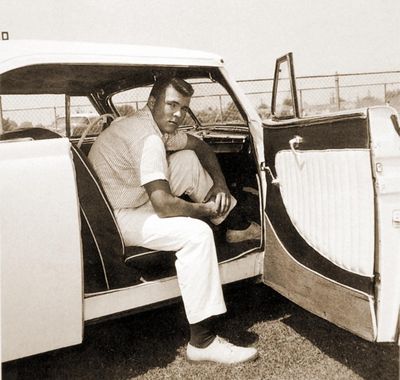Peter Brock
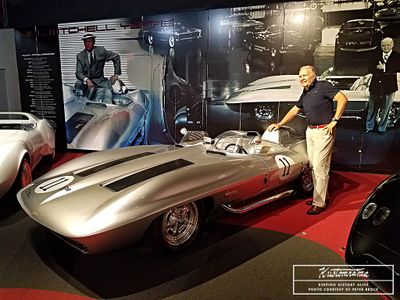


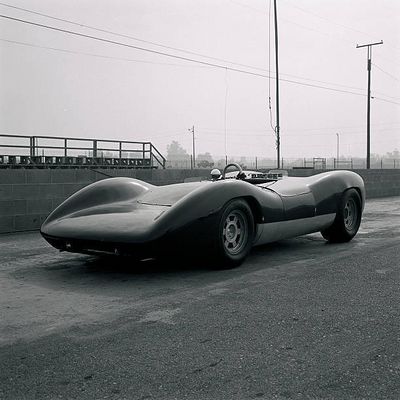
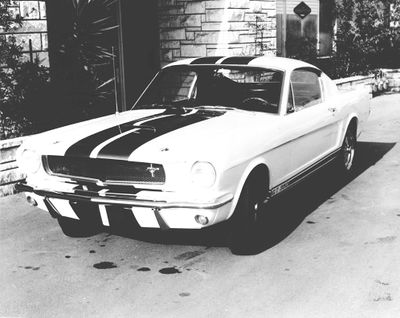
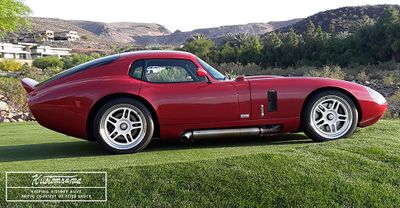
Peter Elbert Brock is an American automotive and product designer known for his work in the motorsports industry. His extensive career spans multiple roles, including designer, racer, author, and entrepreneur.[2]
Contents
School Days, First Custom Car, and Sports Car Interests
Brock grew up in the Sausalito area of Northern California. His passion for cars and automotive design can be traced back to his early years. Growing up, he became fascinated with automobiles and began nurturing his creativity and design skills. When he was 16 years old, he saved money to buy a 1949 MG that he painted white to match the U.S. international racing colors of blue and white.[3]
After his family moved to Menlo Park, Brock bought a 1946 Ford Convertible, which would later become known as the "Fordillac." Originally restyled by Art Lellis and Jerry Moffatt, the car caught Brock's attention when it was placed on a used car lot in San Francisco. Despite his initial preference for sports cars, Brock saw the potential in the custom Ford and decided to sell his MG TC to acquire it.[4]
As a young man, he attended the Art Center Design School of Los Angeles, where he honed his automotive design abilities. During his time at the Art Center, Brock not only studied the art of automotive design, but he also started exploring his own custom car projects.[4] While studying at the Art Center, Brock continued to refine and reimagine his custom creation. He brought the Fordillac to Norm's Auto Body, where additional modifications were carried out. The car's rear end was restyled, recessing the license plate into the rear pan. Push bars replaced the Olds wrap-around-type bumpers, and taillights from an Austin-Healey were integrated. The unique nosepiece of the car was crafted using two Mercury grille shells spliced together, along with the nose of a 1941 Hudson. The interior of the Fordillac was re-upholstered in white and blue pleated Naugahyde, with a tonneau cover featuring white with dark blue stripes. The car received an Arctic white paint job with dark blue Cunningham racing-style colors, which was a distinctive choice at the time.[5]
As Brock's design skills and interests continued to evolve, he made the decision to sell the Fordillac to fund his education at the Art Center College of Design in 1956. He then ventured to Detroit to work as a designer for General Motors. The Fordillac holds a significant place in Brock's automotive journey, not only as his first major custom car project but also as an inspiration for future designs. The racing stripes that adorned the Fordillac were a tribute to Briggs Cunningham's participation as an American at Le Mans, and Brock later incorporated similar stripes into the livery of the Mustang GT350s that were built at Shelby American starting in 1965.[4]
Early Career and Design Contributions
Brock started his career at General Motors as a designer at the age of 20. He sketched what later became the 1959 Chevrolet Stingray Racer and the 1963 Chevrolet Corvette Sting Ray. He was the first employee hired by Carroll Shelby, and he played a significant role in creating Shelby American. He transformed the Shelby Cobra roadster into the Cobra Daytona Coupe in 1963. This car became the first American vehicle to win the FIA's GT World Championship in 1965. Besides his design contributions, Brock also created the Shelby "brand," designing logos, ads, and race car graphics.[2]
Brock Racing Enterprises
In December 1965, Brock founded Brock Racing Enterprises (BRE), his own design firm and motor racing team. BRE worked with Hino, Toyota, and Datsun, and Brock designed GT cars for BRE clients, including the Hino Samurai, a showy mid-engine GT for the prestigious Japan GP series. BRE became the west coast Datsun factory race team and achieved success in the SCCA DP class with Datsun 2000 roadsters, in the CP class with the 240Zs (SCCA National Champions '70-'71), and in the 2.5 Trans-Am Series races with the Datsun 510s (National Champions '71-'72).[3]
Later Work and Achievements
After leaving BRE, Brock founded Ultralite Products, which became the largest hang-gliding company in the world. He later returned to the automotive industry and worked at the Hi-Tech company in South Africa to create a modern version of the Daytona Cobra Coupe, the Brock Coupe. He also co-wrote with his wife Gayle the award-winning books: Corvette Sting Ray: Genesis of an American Icon and The Road to Modena: Origins and History of the Shelby-DeTomaso P70 Can-Am Racer.[3]
In 2022, Brock was honored as the Master of Motorsports at the American Speed Festival, which celebrated the 60th anniversary of Shelby American's impact on sports cars. That same year, he worked with Ian Callum and an Irish company, AVA, to launch a reinterpretation of the Corvette Sting Ray as an all-electric “hyperclassic.” By the Summer of 2023, the AVA project in Ireland had been shelved.[3]
Personal Life
In June of 2023, Brock lived in Henderson, Nevada, with his wife Gayle. They worked together, and Gayle ran the current-day BRE operation, which offered memorabilia from the 1960s and 1970s, built Aerovault car trailers and offered aftermarket parts and accessories for Datsuns and Daytona Coupe replicas.[3]
Pete Brock's Cars
Peter Brock's 1946 Ford Convertible - The Fordillac
References
Did you enjoy this article?
Kustomrama is an encyclopedia dedicated to preserve, share and protect traditional hot rod and custom car history from all over the world.
- Help us keep history alive. For as little as 2.99 USD a month you can become a monthly supporter. Click here to learn more.
- Subscribe to our free newsletter and receive regular updates and stories from Kustomrama.
- Do you know someone who would enjoy this article? Click here to forward it.
Can you help us make this article better?
Please get in touch with us at mail@kustomrama.com if you have additional information or photos to share about Peter Brock.
This article was made possible by:
SunTec Auto Glass - Auto Glass Services on Vintage and Classic Cars
Finding a replacement windshield, back or side glass can be a difficult task when restoring your vintage or custom classic car. It doesn't have to be though now with auto glass specialist companies like www.suntecautoglass.com. They can source OEM or OEM-equivalent glass for older makes/models; which will ensure a proper fit every time. Check them out for more details!
Do you want to see your company here? Click here for more info about how you can advertise your business on Kustomrama.
